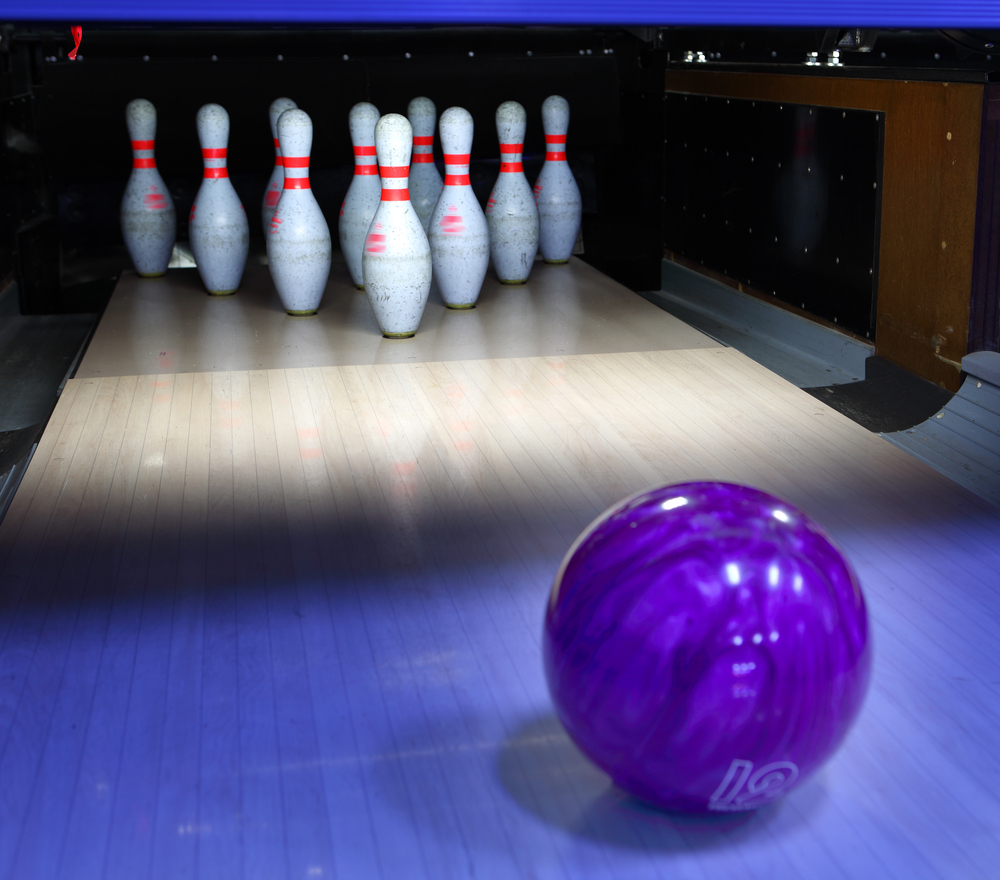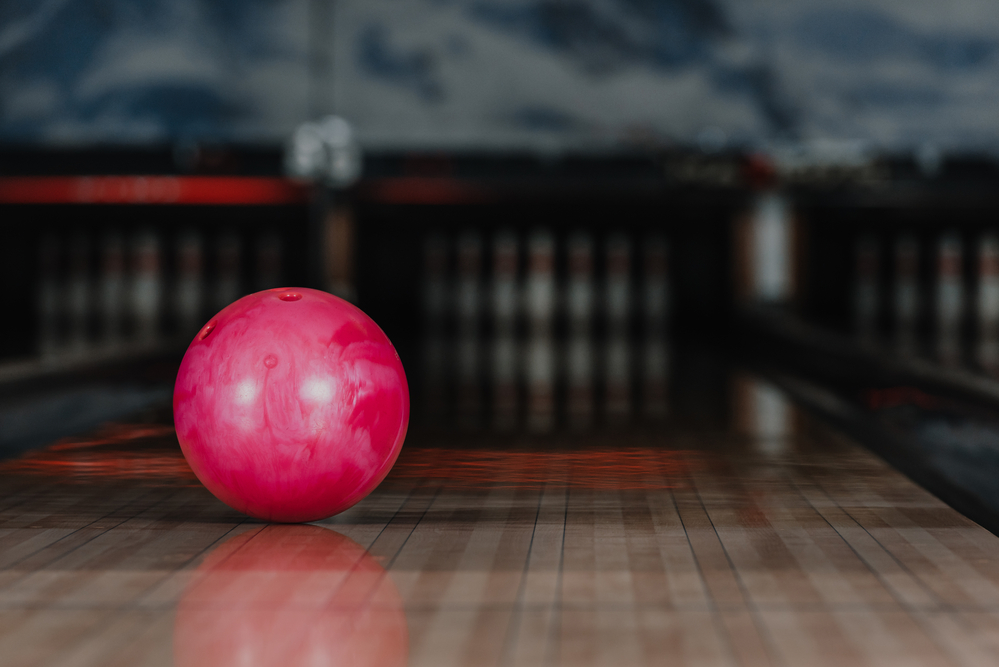
If you're new to the game of bowling, you probably didn't know that there were multiple shot types. Yet, there are!
Learning about all of them can help you make a strategic decision about which one to use in any given situation.
The four basic shots in ten pin bowling shouldn't be confused with the four basic lawn bowling shots: the draw, the yard on, the running shot/ditch length shot, and the drive.
So, what are the four basic shots in bowling? In this article, we'll introduce and discuss the four basic shots in bowling, tell you when to use them, how to execute them, and more.
Let's get right into it!
Contents
What Are the Four Basic Shots in Bowling?
The four basic shots in bowling are the straight shot (the easiest), the curve shot, the hook shot, and the backup ball (which moves in the opposite direction). In the next section, we'll discuss the four basic bowling shots in detail, including how to execute each shot.
The Straight Shot
The straight shot is the most straightforward of all bowling shots. As you might guess, it involves you simply throwing the ball straight.
It doesn't mean you throw the ball down the middle of the lane each time. It more so refers to how the ball is released. You won't do any fancy wrist movements to make the ball spin or go in any particular direction.
The straight shot is the best option when you're a beginner and are still trying to get a feel for the game. But it's also a great option when you're trying to pick up a spare involving a pin or two.

How to Execute a Straight Shot
To execute a straight shot, you’ll start by gripping a straight ball, like any plastic ball, with your middle and ring fingers. Your index finger and pinky should be resting lightly on the ball. Put your thumb into the proper hole and ensure it's positioned in the middle of the ball.
When you're ready to throw, take a few steps forward and release the ball in a straight line. Remember to keep your arm relatively straight as you release it. Don't allow your wrist to turn to either side, as doing so might add spin to the ball and cause it to curve or hook.
The Curve Shot
Unlike a straight shot, a curve shot is a shot where you make the ball curve as it moves down the lane. You’ll throw the ball down the lane with a bit of spin.

How to Throw a Curve Shot in Bowling
Throwing a curve shot in bowling is not as difficult as it may seem. Here are a few simple steps to help you get started:
First, with a curve ball, like a urethane ball, start with your feet shoulder-width apart and your weight evenly distributed. Then, take a step forward with your opposite foot from the hand you will use to throw the ball. For example, if you use your right hand to throw the ball, take a step forward with your left foot.
Next, swing your arm back and up as you would for a standard bowling shot, but allow your fingers to slide off the ball at the top of the swing.
As you release the ball, snap your wrist so your palm faces downwards. This will give the ball spin and cause it to curve. Finally, follow through with your arm after you release the ball.
The Hook Shot
The elusive hook shot - it looks like a regular shot to the untrained eye, but those in the know can spot a hook shot from a mile away.
Here’s what you need to know about it.
A hook shot occurs when the hook ball, like a reactive bowling ball, curves sharply towards the pins rather than going straight or curving slightly.
Hook shots are often used by experienced bowlers since they can be fine-tuned to hit the pins in various ways. When done correctly, a hook shot can be impressive to watch - and even more impressive to execute.

How to Execute a Hook Shot
For many bowlers, the hook is the Holy Grail of bowling, that perfect mix of power and accuracy that sends the pins scattering like leaves in a storm. But achieving the perfect hook is no easy feat. It requires a delicate balance of skills and techniques.
Here are some tips on how to bowl a hook.
You’ll get in a basic bowling stance, approach the lane, and swing your arm back. When you swing your arm forward, release the ball by removing your thumb first, and with a quick snap of your wrist and middle and ring fingers are last out of the ball.
If you’re right-handed, you’ll spin to the left, and vice versa if you’re left-handed.
This will cause the ball to spin as it moves down the lane and hook at some point. The key is to experiment with different amounts of spin to see what works best for you.
Of course, there's more to it than just that. Bowling balls hook differently depending on their construction, so you'll need to experiment to find one that suits your style. And remember: repetition helps you refine your shot.
The more you bowl, the better you'll get at finding that sweet spot between less or more force and accuracy.
The Backup Ball
Contrary to what you might think, a backup ball in the context of shot types does not refer to an extra ball. A backup shot is a shot that hooks in the opposite direction than it typically would be based on your dominant hand.
Usually, when a right-handed bowler hooks the ball, it’ll go from right to left. With a backup shot, that same bowler’s ball would hook from left to right.
Conversely, when a left-handed bowler hooks the ball, it typically goes from left to right. The backup shot for this bowler would go from right to left.

How to Do a Backup Shot
The key to executing a successful backup shot is to use the same force as you would with your regular hook shot but to twist your wrist in the opposite direction. This can be tricky, whether you’re a beginner or a seasoned bowler.
As with any shot, start by positioning your feet shoulder-width apart. With your weight evenly distributed, take a few steps forward and release the ball when it feels natural.
As you release the ball, twist your wrist in the opposite direction than you normally would to give it some spin.
The key is to keep your wrist firm but not tense and to rotate your hand as you release the ball. If done correctly, this will result in a backup ball.
Note: This shot is generally frowned upon in competitive bowling because it’s difficult to control. It will often result in a gutter ball.
So, while the backup shot is fun to experiment with at the bowling alley with your friends, we wouldn’t recommend using it in a tournament. You’ll very likely not get the results you’re going for.
Which Shot Should You Primarily Use?
Now that you know the four basic shots in bowling, you might be wondering which one is right for you. The answer, of course, depends on your bowling style and preferences.
We recommend sticking to the straight shot if you’re just starting out in the sport.
Once you’ve got a handle on that, start experimenting with the other shots. After a while, choosing the right one to use in a given situation will feel like second nature.
You should also consider what’s happening in your bowling game. If you normally use the hook shot and are faced with a spare involving a single pin, going for a straight shot makes the most sense. Hook and curve shots are best suited to getting strikes.
Related Articles
There you have it - the four basic shots in bowling. While they may seem simple to some, each shot requires its own unique set of skills and techniques.
But with a bit of practice, you’ll be nailing them in no time. We wish you the best of luck - and remember, always have fun!
That’s what bowling is all about, after all!
Kira Byrd, a Certified Fraud Examiner, holds a B.S. in Accounting from the University of Alabama at Birmingham. With a passion for bowling from her childhood, Kira has poured her expertise and personal experiences into creating and nurturing Bowling For Beginners. Kira's mission is to meet new bowlers where they are and guide them toward consistently achieving higher scores. With a focus on skill development and strategic techniques, she empowers readers to take control of their game and unlock their true potential.
Bowling For Beginners embodies strict editorial integrity, ensuring reliable and unbiased information. Kira's commitment to delivering valuable insights and practical strategies is reflected in every article. Here's an explanation of our editorial policy and how we get money.





